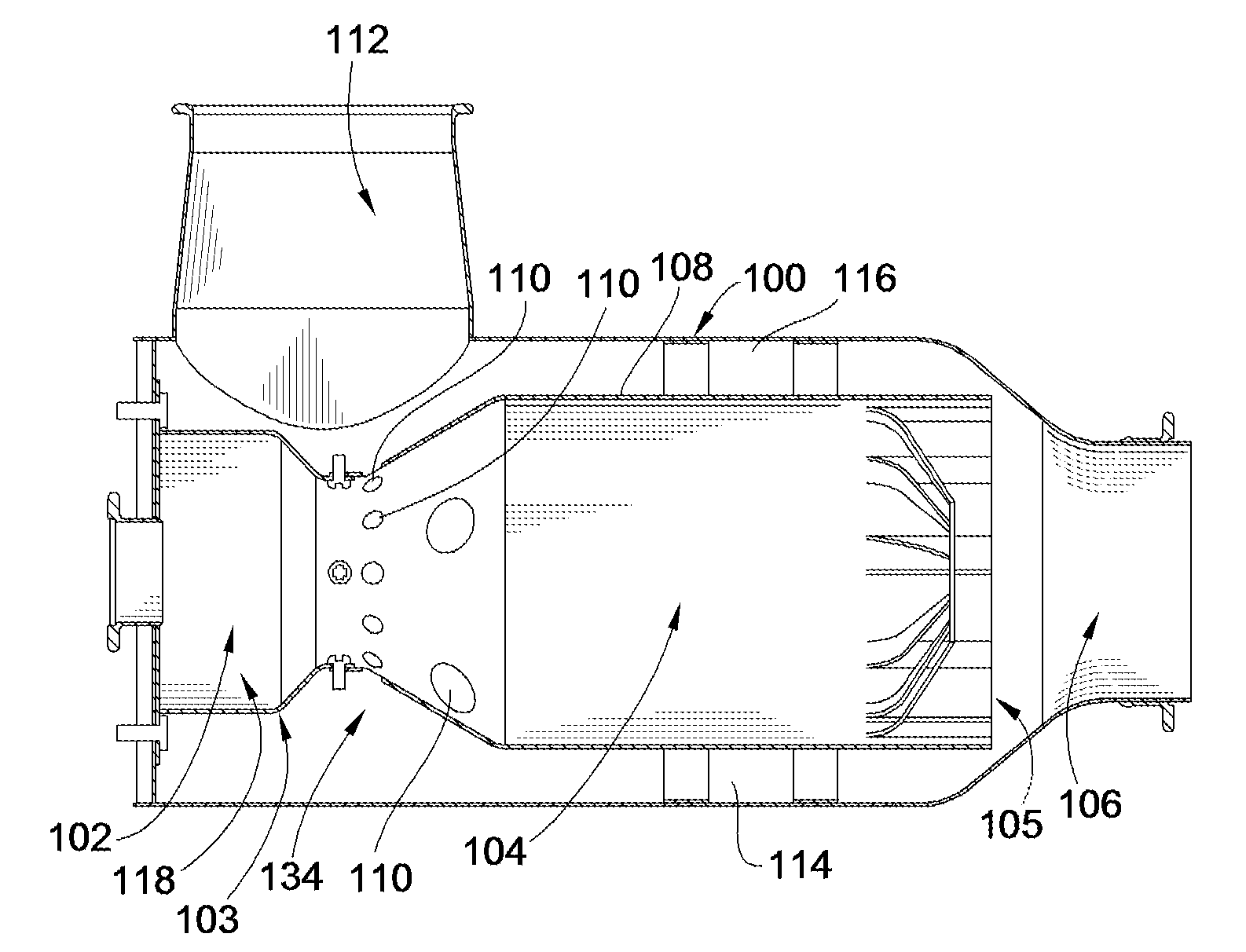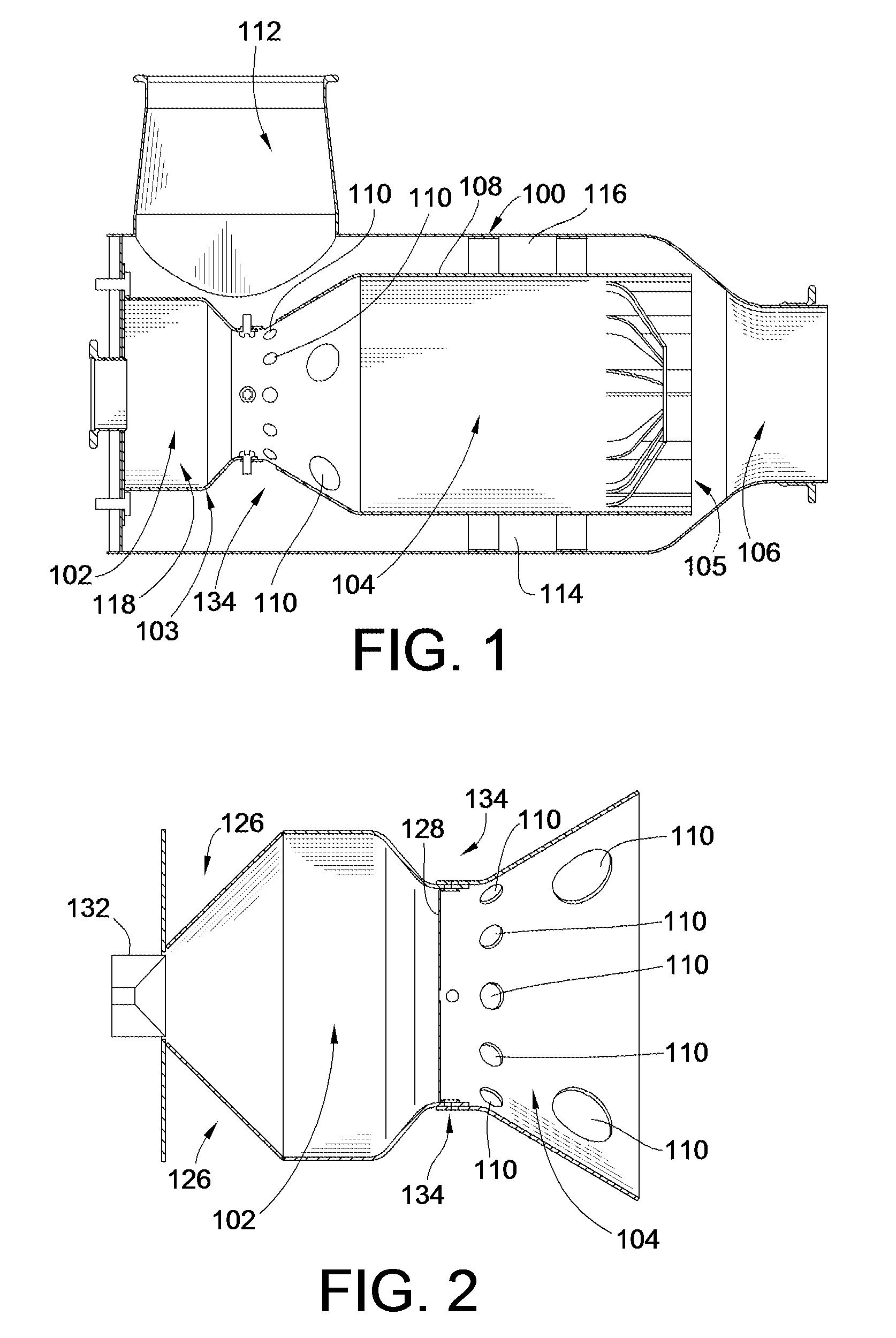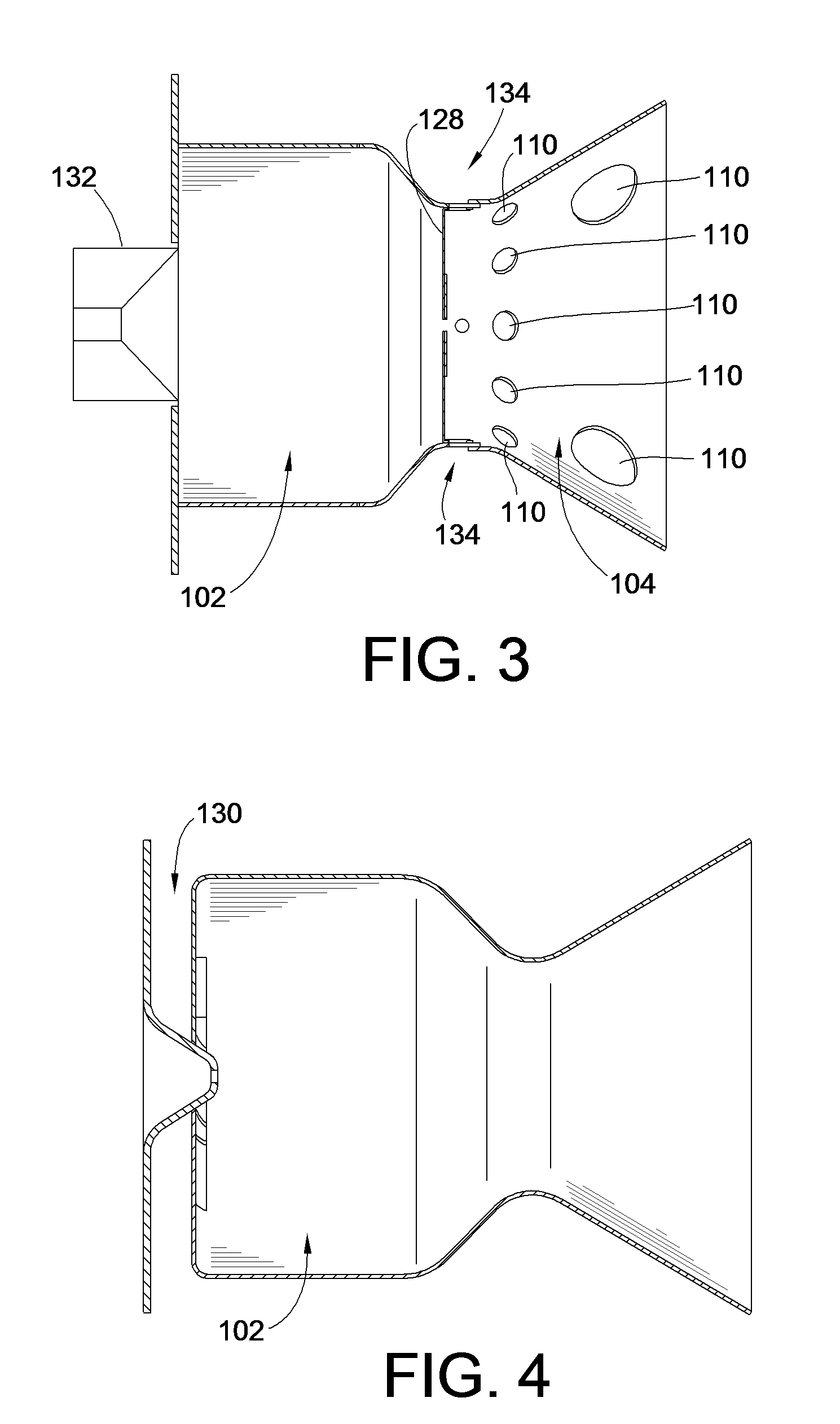Low pressure drop mixer for radial mixing of internal combustion engine exhaust flows, combustor incorporating same, and methods of mixing
a technology of internal combustion engine and mixer, which is applied in the direction of machines/engines, transportation and packaging, light and heating apparatus, etc., can solve the problems of engine thermal efficiency decline, exhaust gases experiencing significant pressure drop passing through the increasingly restrictive dpf, and engine problems such as the effect of reducing the flow rate of exhaust gases, and increasing the surface area and interaction
- Summary
- Abstract
- Description
- Claims
- Application Information
AI Technical Summary
Benefits of technology
Problems solved by technology
Method used
Image
Examples
Embodiment Construction
[0046]As briefly discussed above and as a matter of context for the discussion of embodiments of the present invention, a DPF is installed in the exhaust flow path of a diesel engine before or upstream of an exhaust outlet to filter out particulates from the diesel engine exhaust. In order to clean the collected particulates, e.g. soot, off of the DPF, a combustor may be used upstream of the DPF but downstream from the exhaust inlet from the engine. The engine exhaust gases flow through openings of the combustor and through the DPF before exiting into the environment via the exhaust outlet.
[0047]In a typical fuel fired combustor fuel and air are supplied via a fuel valve and an air valve, e.g. such as electrically controlled solenoid valves. The fuel and air mixture is then ignited by one or more spark plugs positioned therein. An ignition controller may be able to communicate with the engine management system (EMS), and may receive various engine and system operating parameters, su...
PUM
| Property | Measurement | Unit |
|---|---|---|
| angle | aaaaa | aaaaa |
| angle | aaaaa | aaaaa |
| angle | aaaaa | aaaaa |
Abstract
Description
Claims
Application Information
 Login to View More
Login to View More - R&D
- Intellectual Property
- Life Sciences
- Materials
- Tech Scout
- Unparalleled Data Quality
- Higher Quality Content
- 60% Fewer Hallucinations
Browse by: Latest US Patents, China's latest patents, Technical Efficacy Thesaurus, Application Domain, Technology Topic, Popular Technical Reports.
© 2025 PatSnap. All rights reserved.Legal|Privacy policy|Modern Slavery Act Transparency Statement|Sitemap|About US| Contact US: help@patsnap.com



